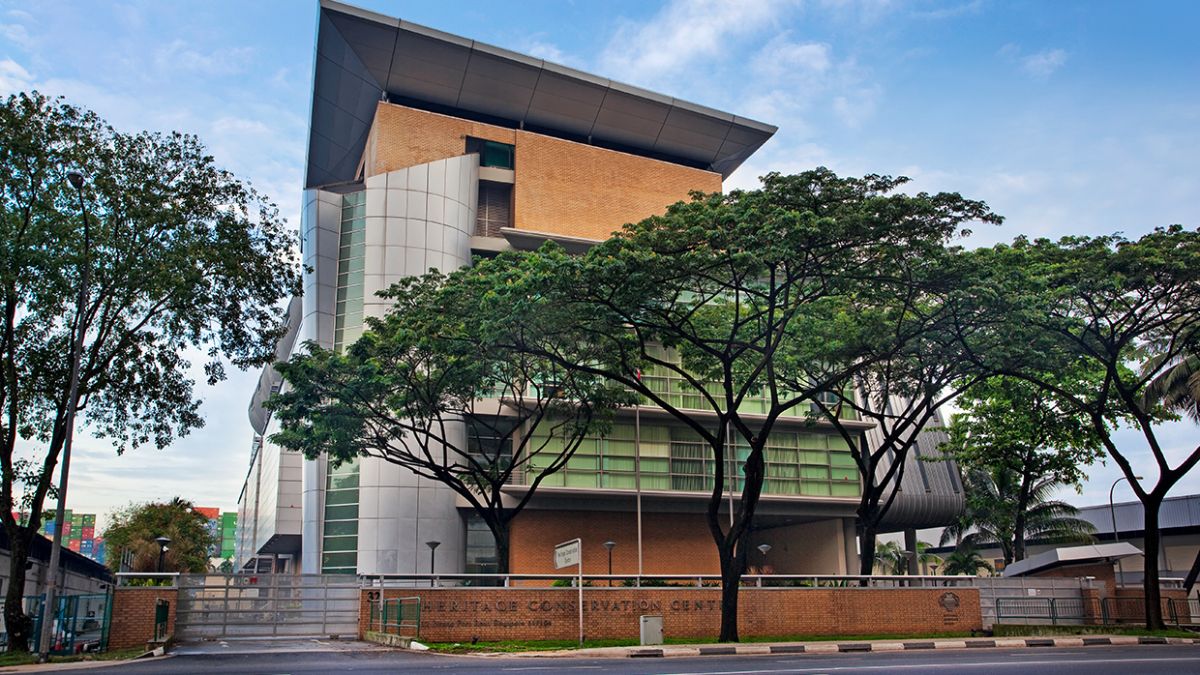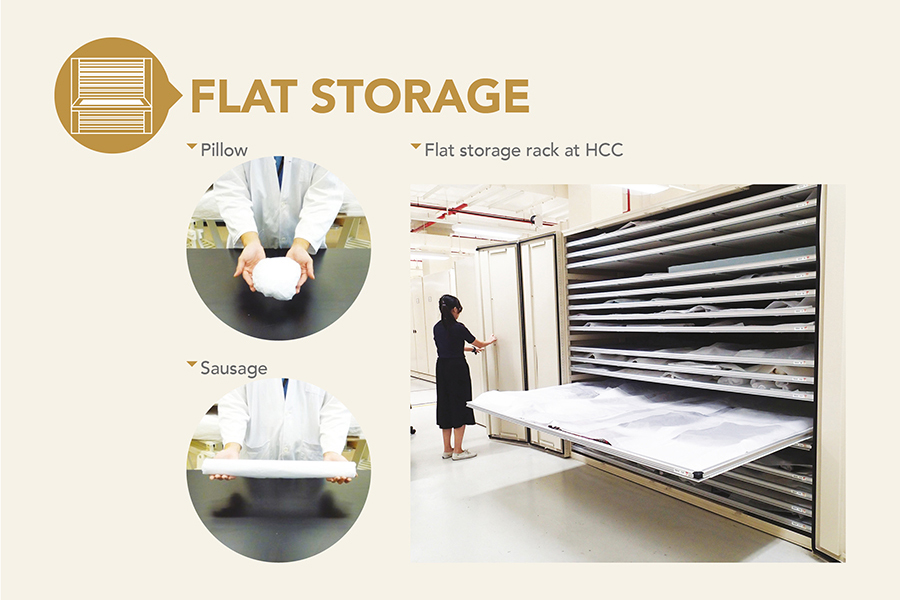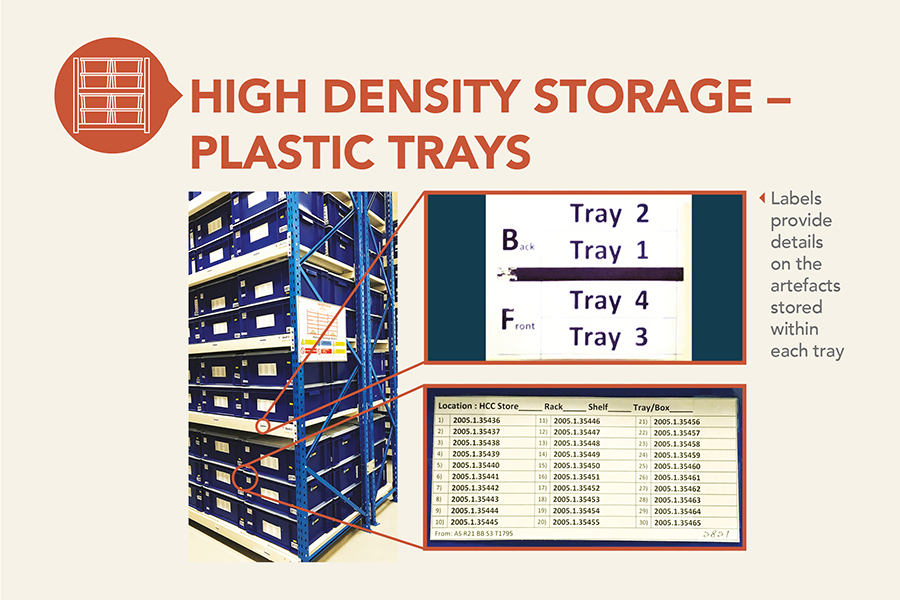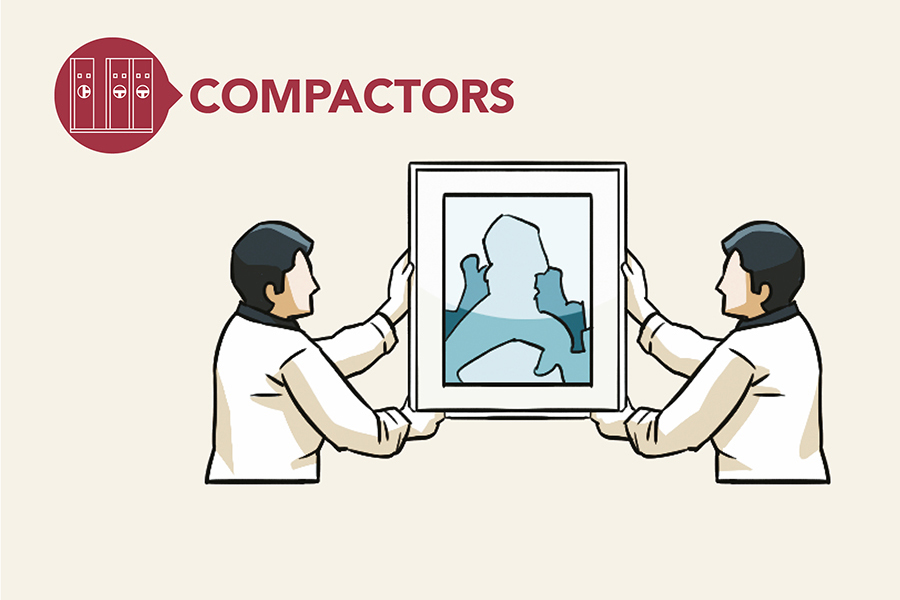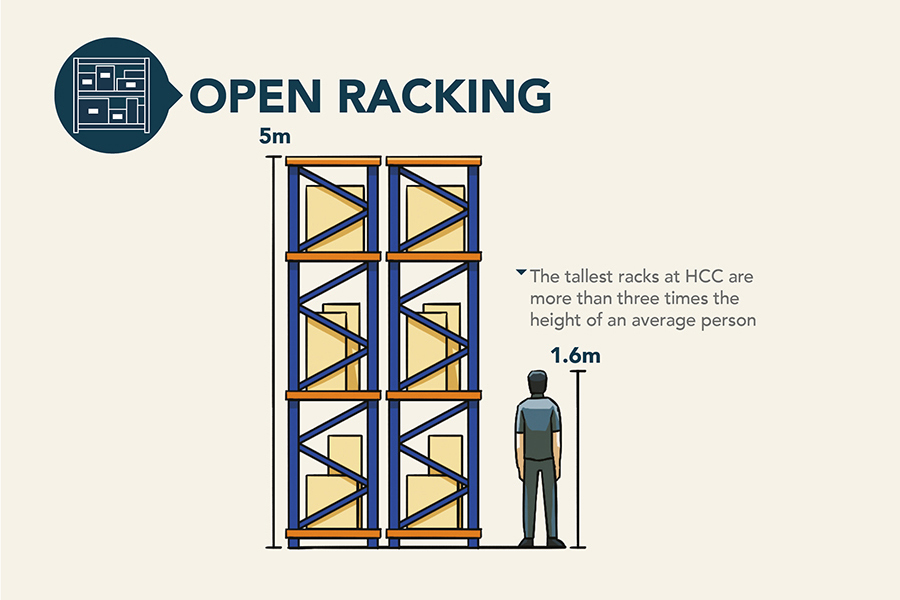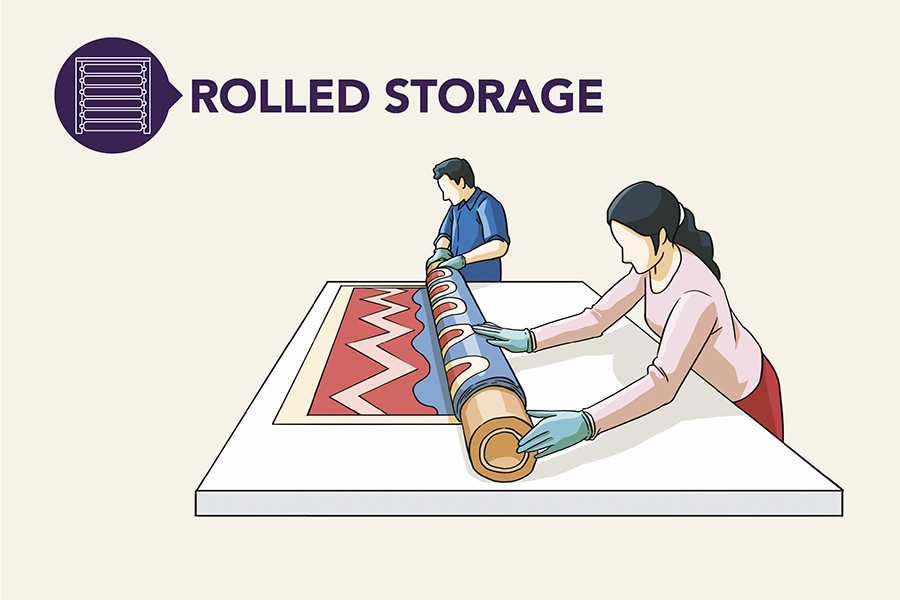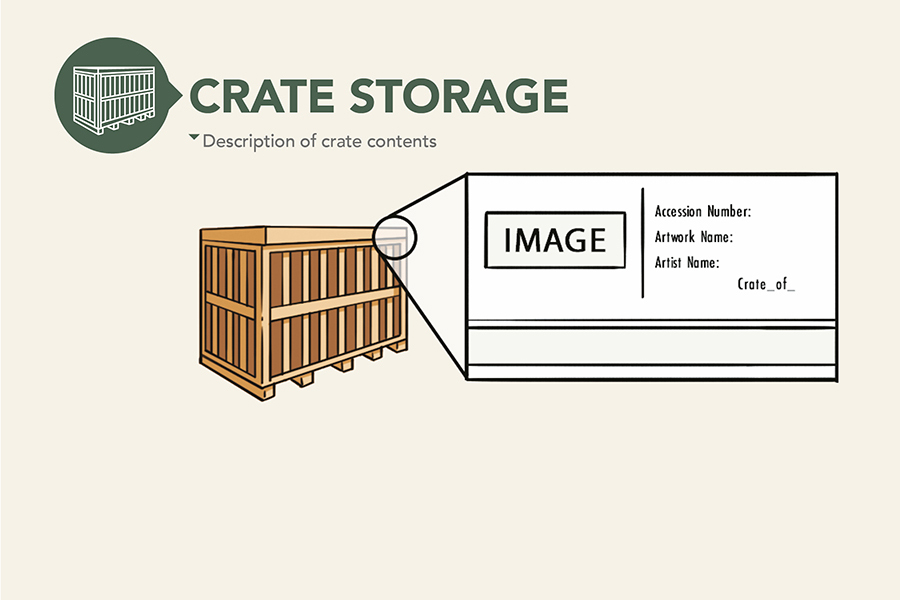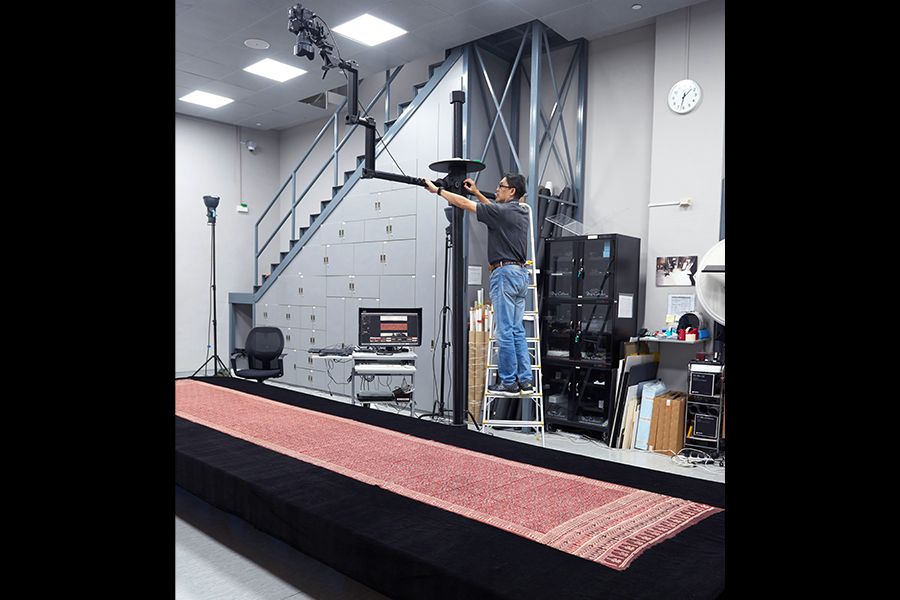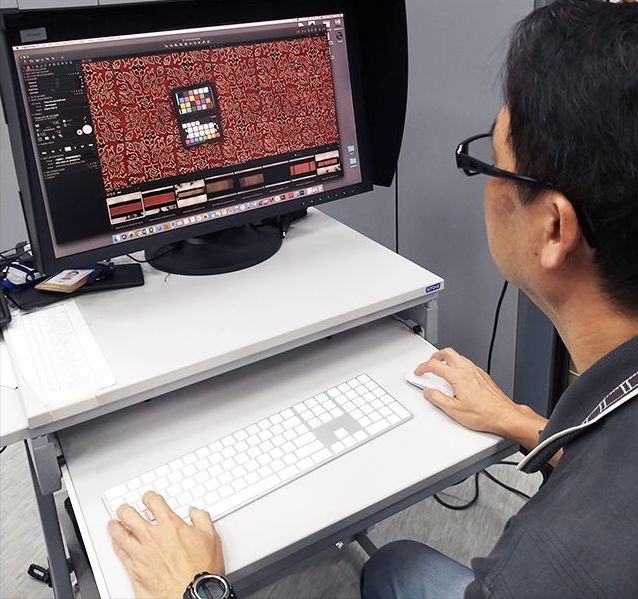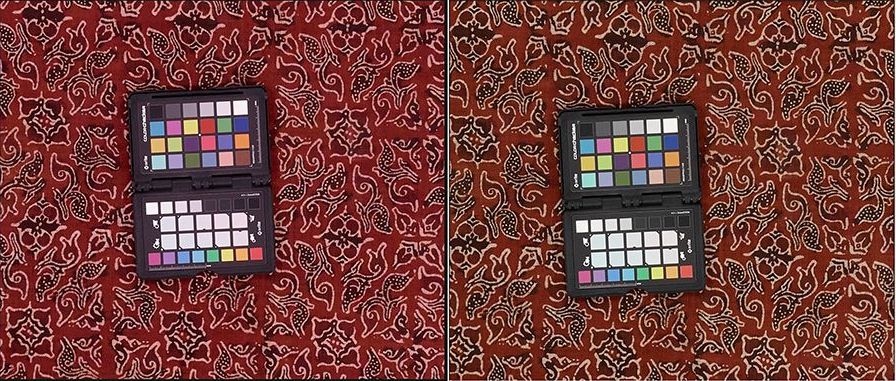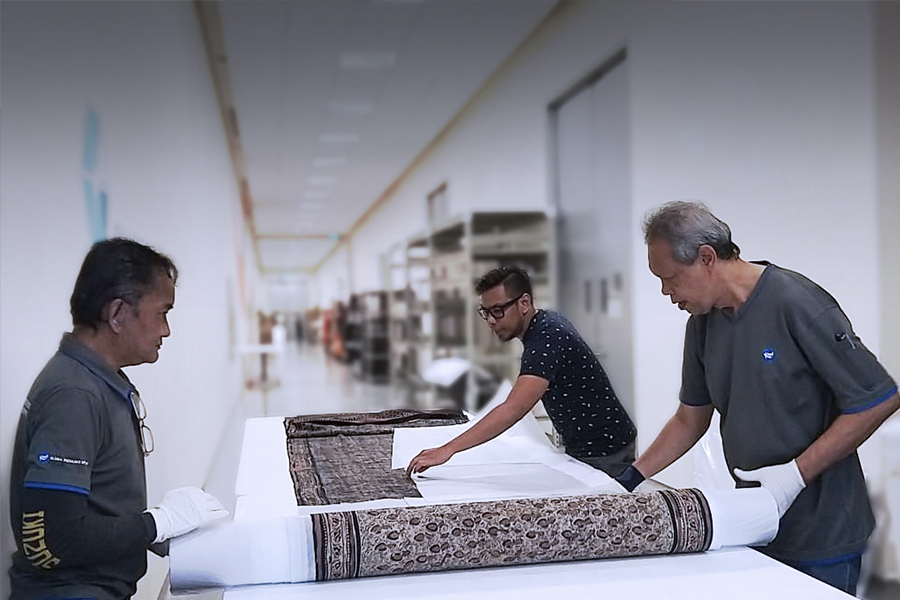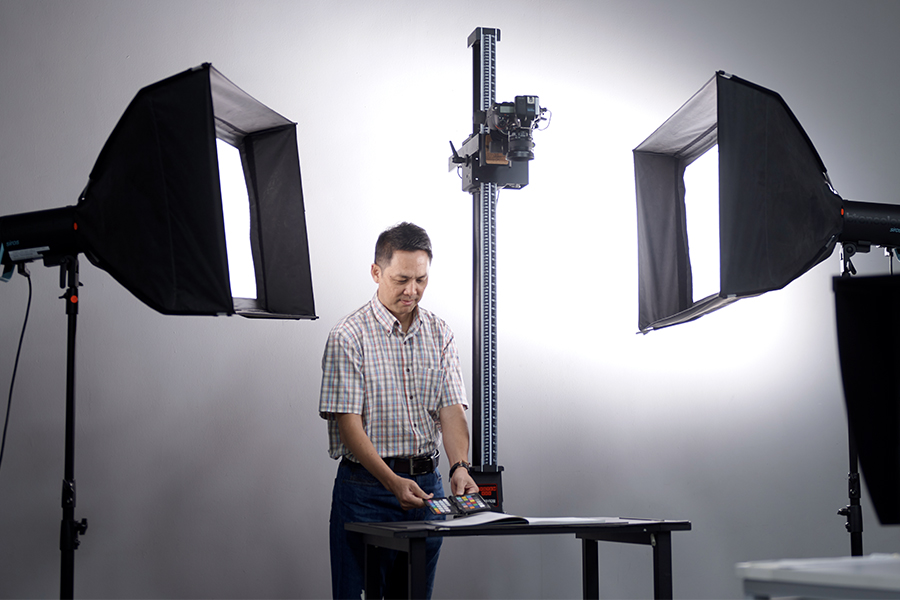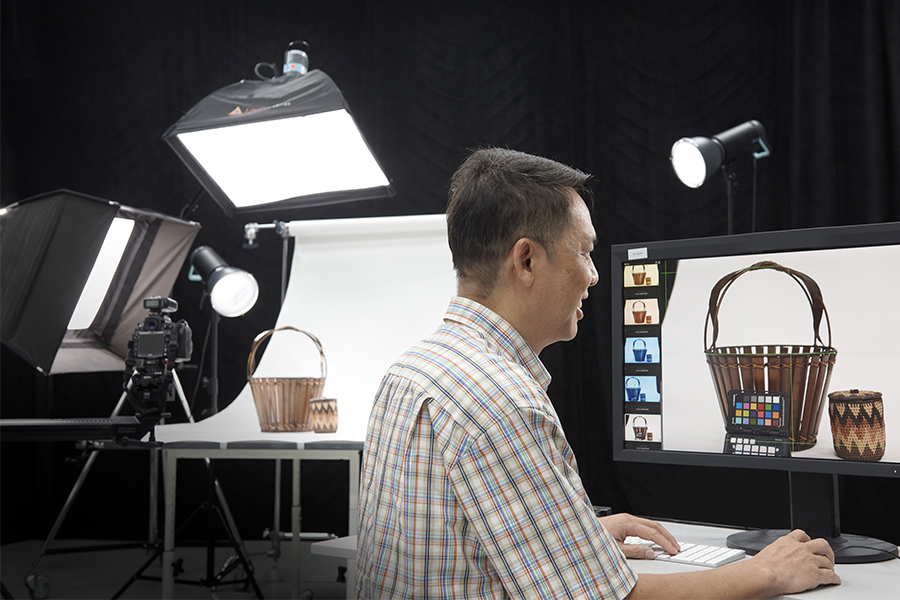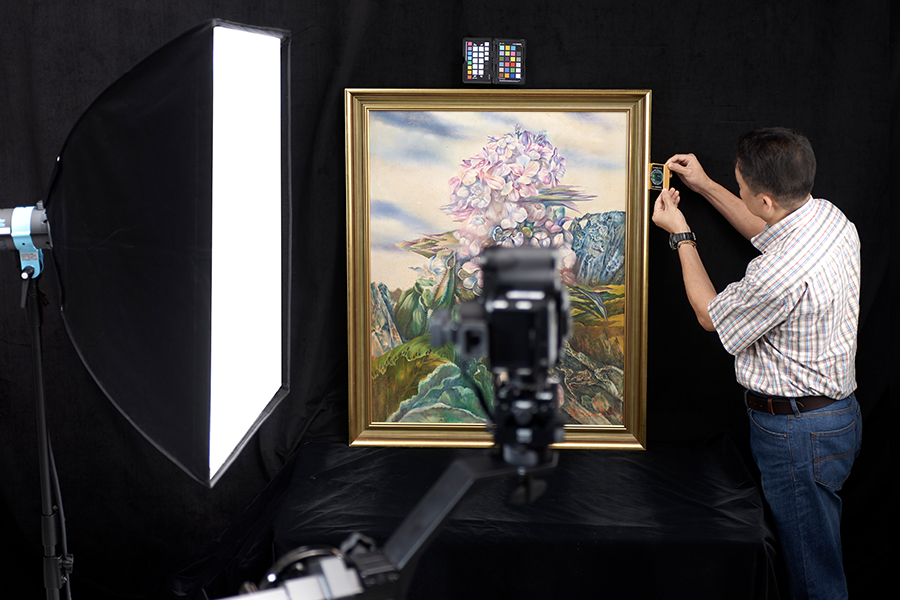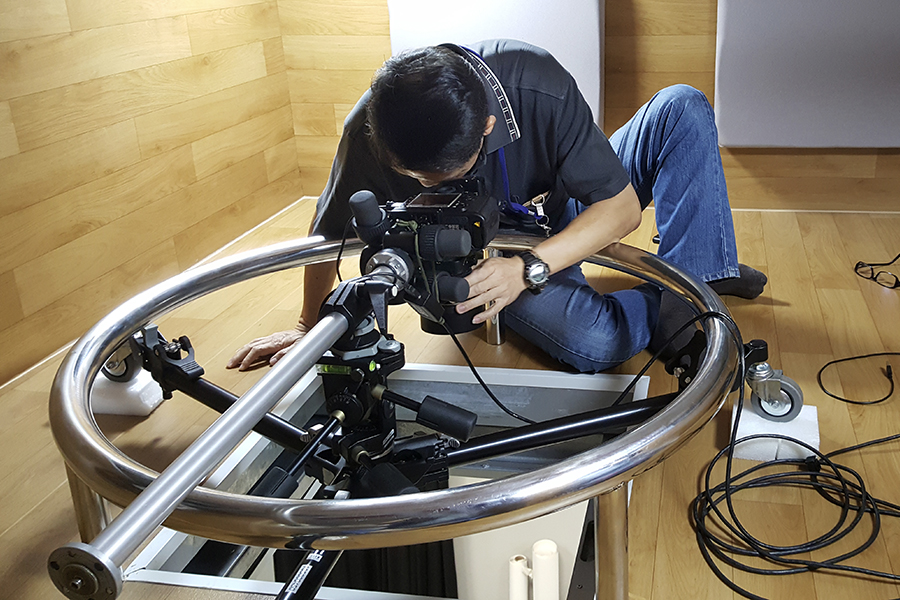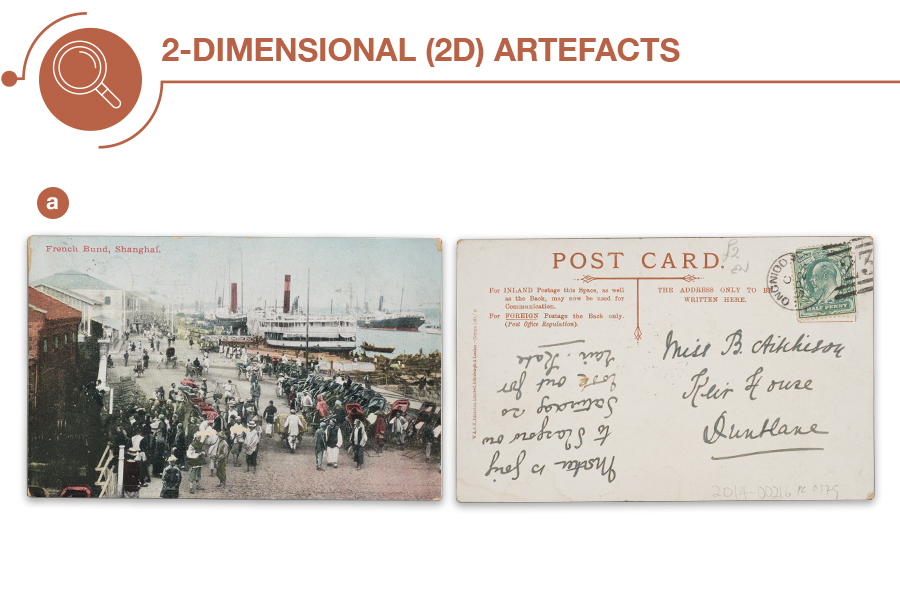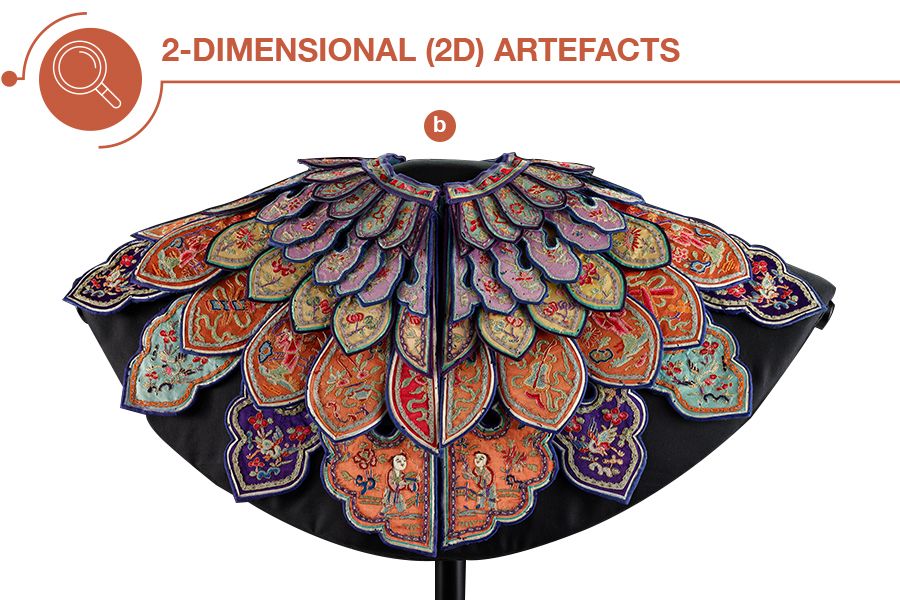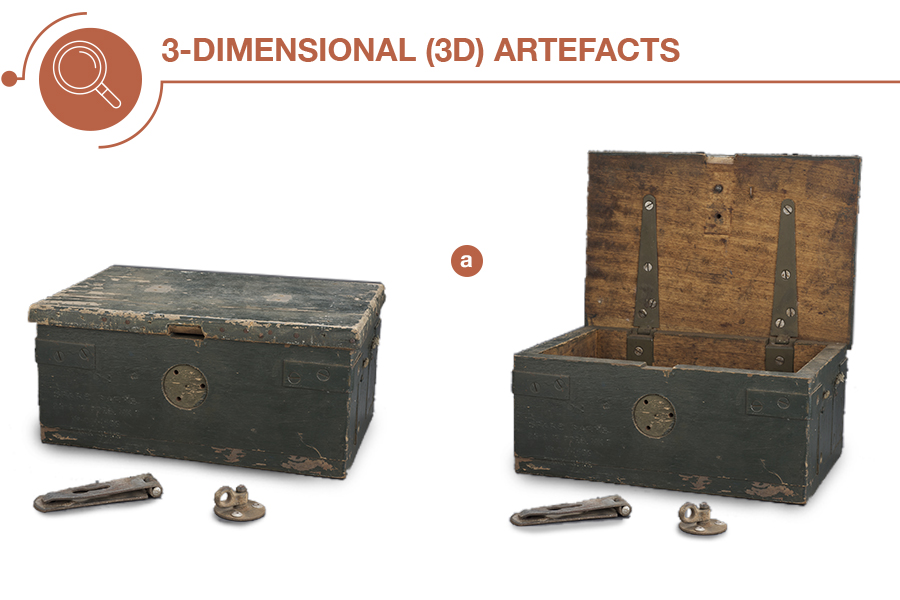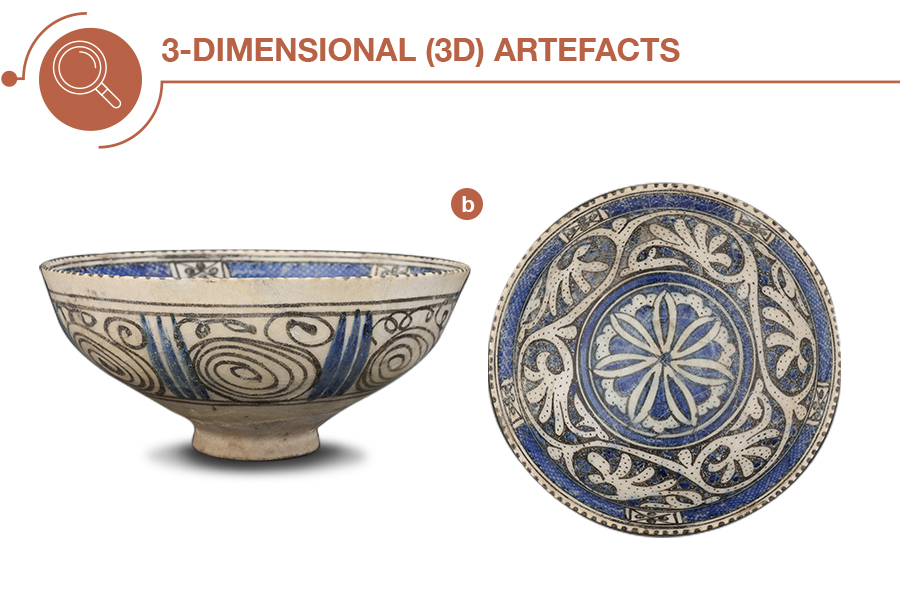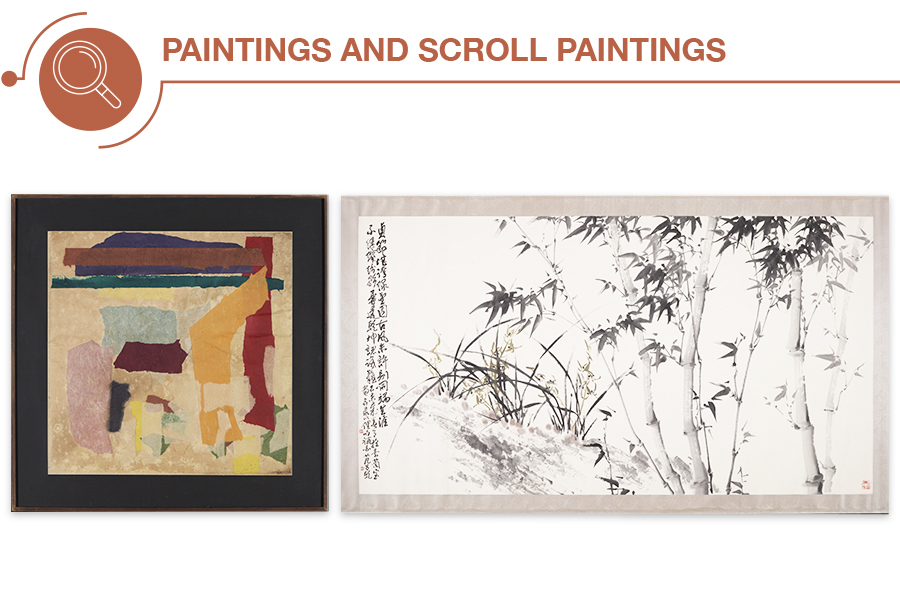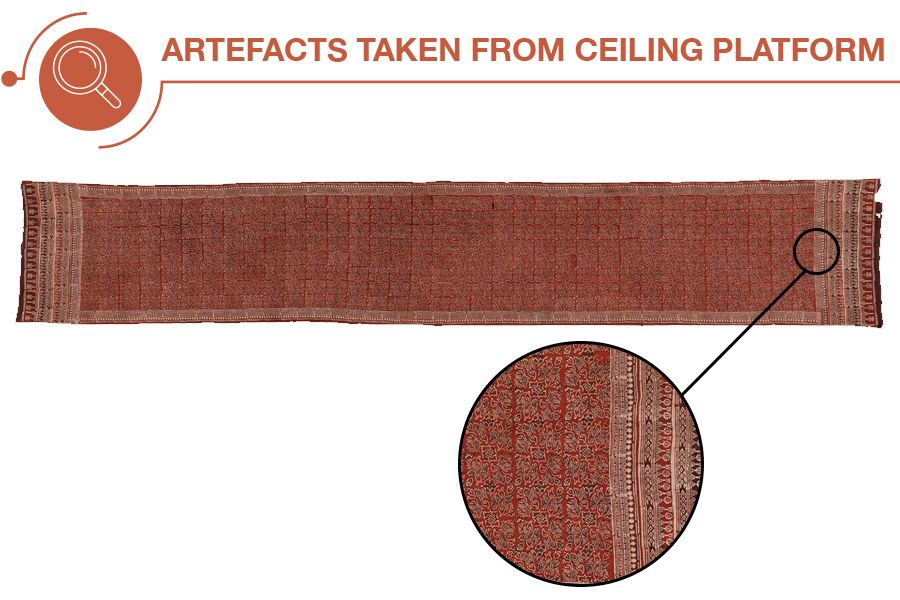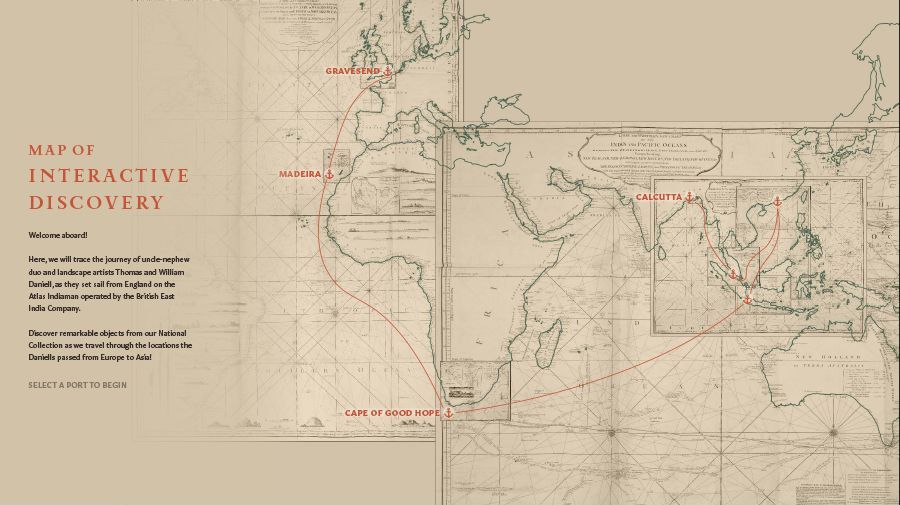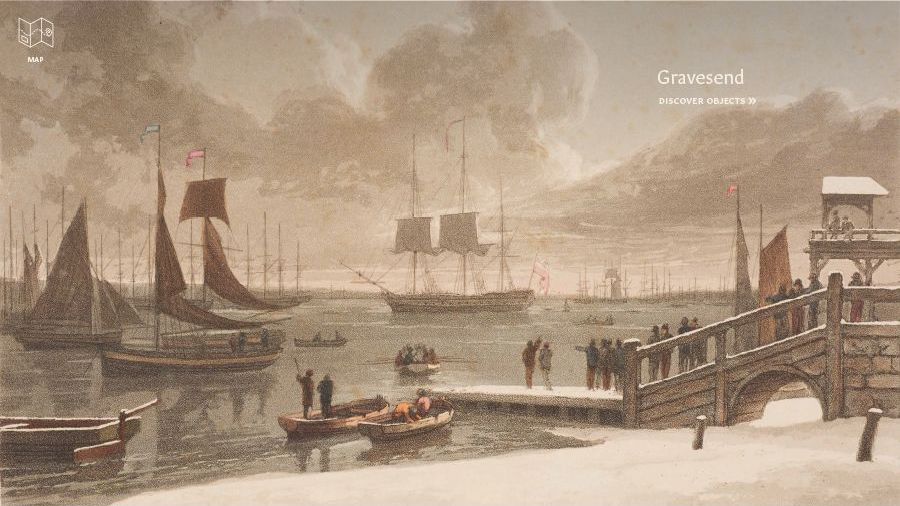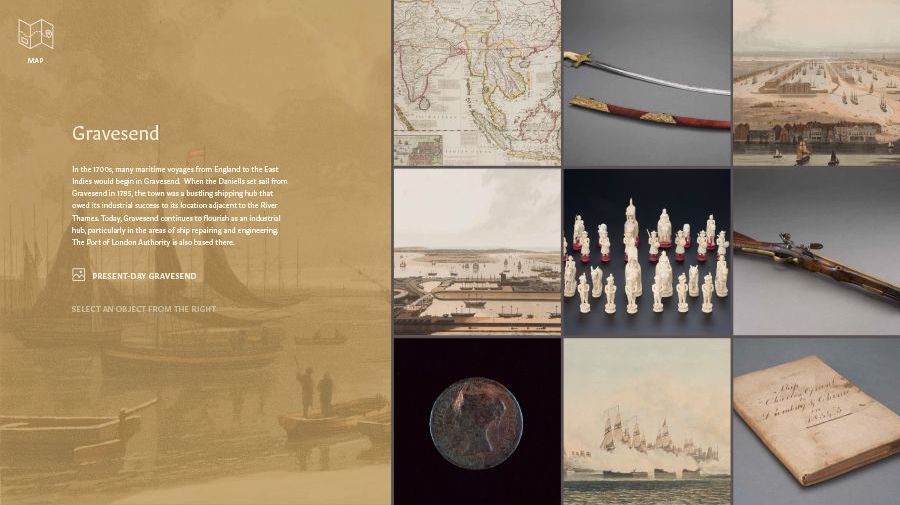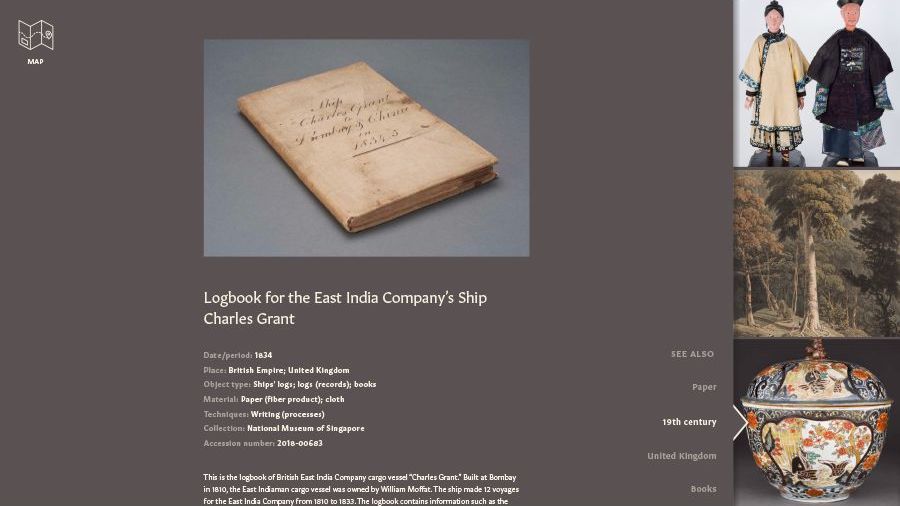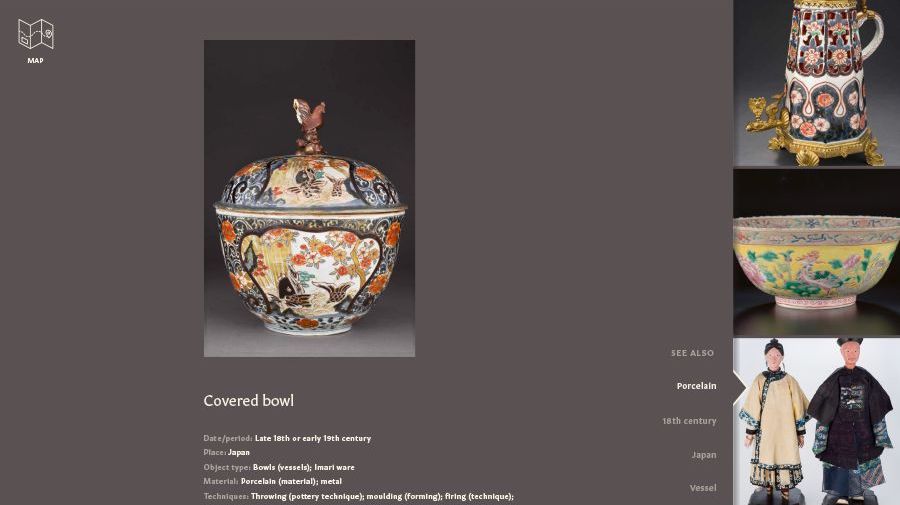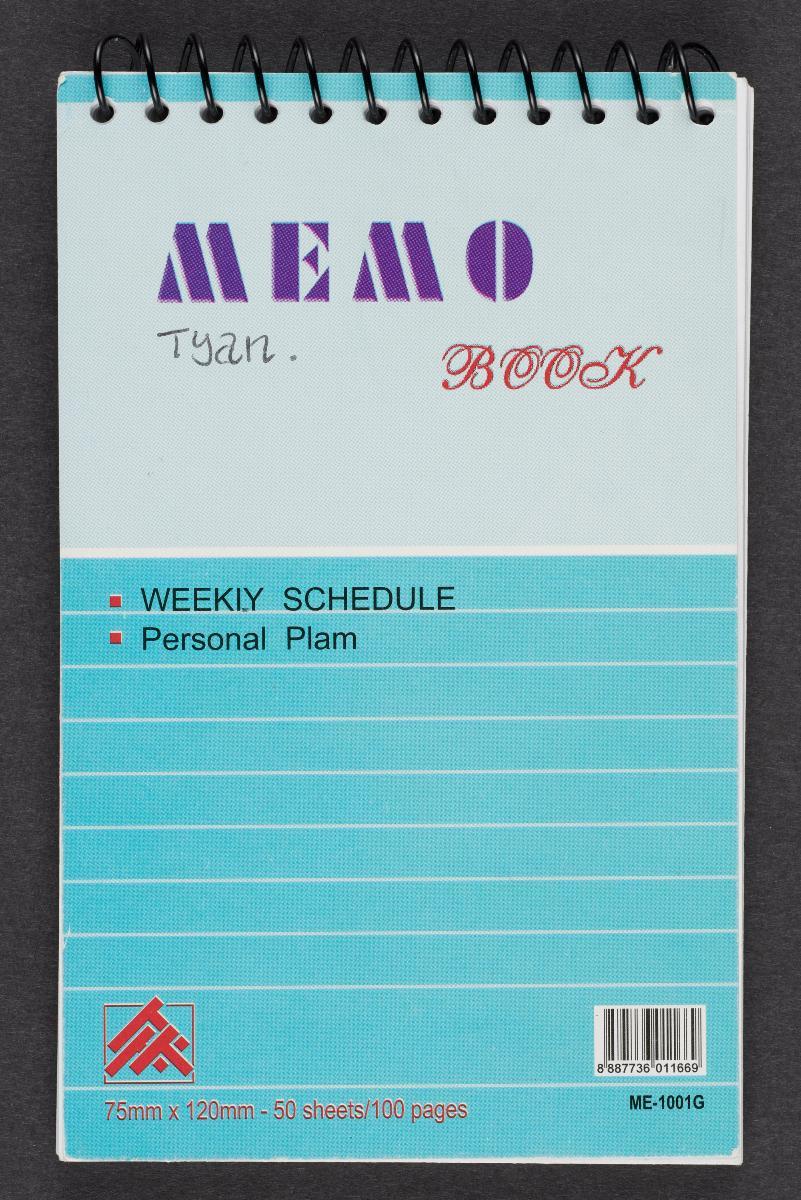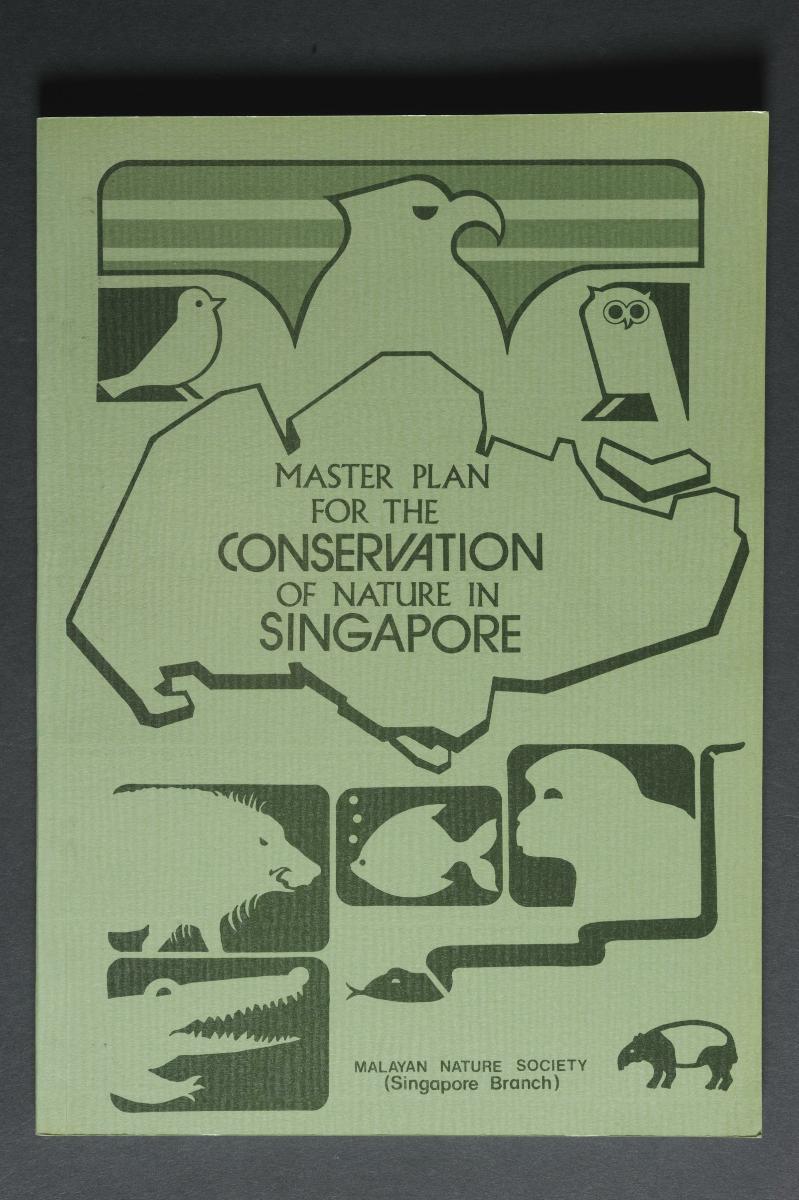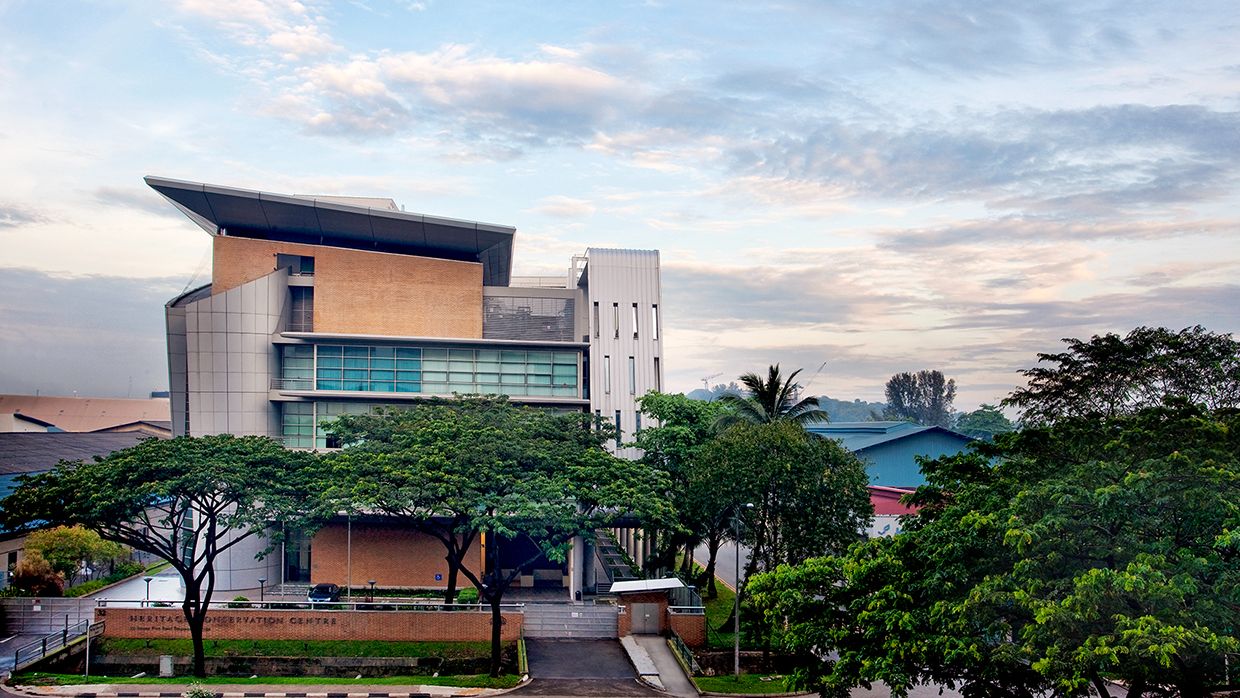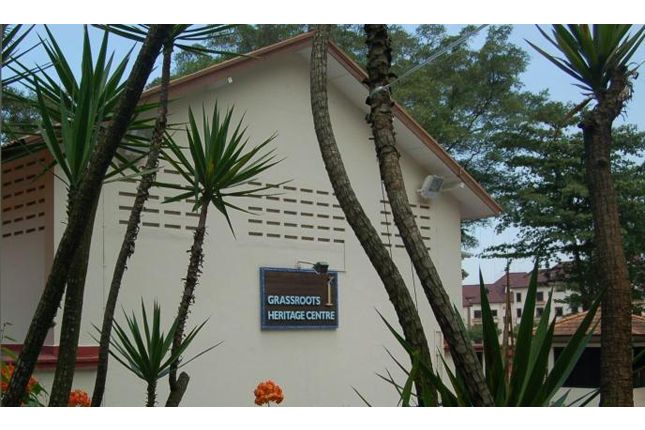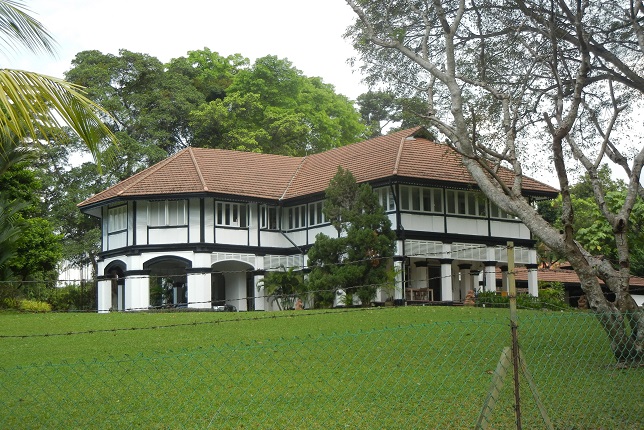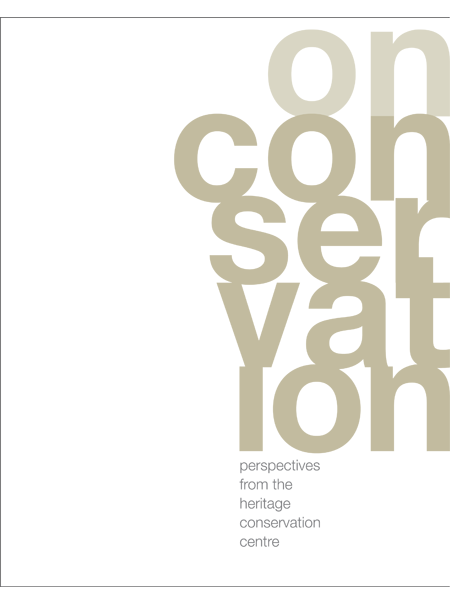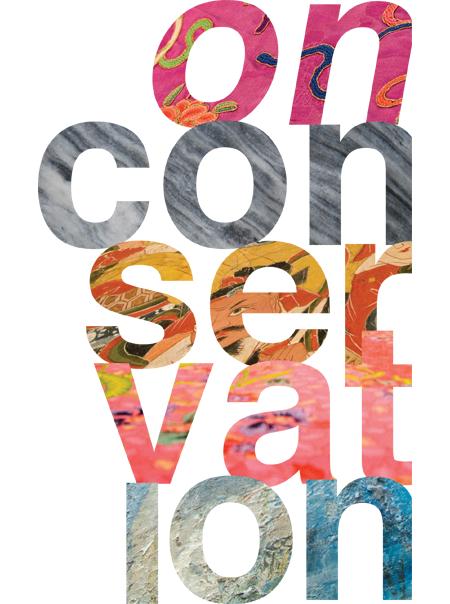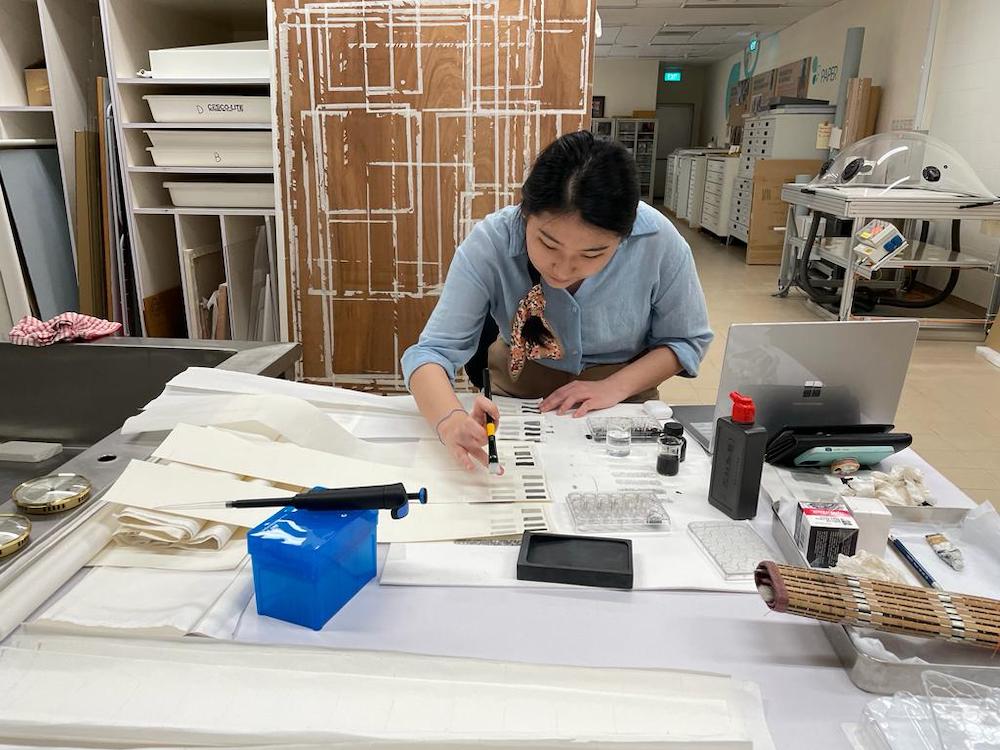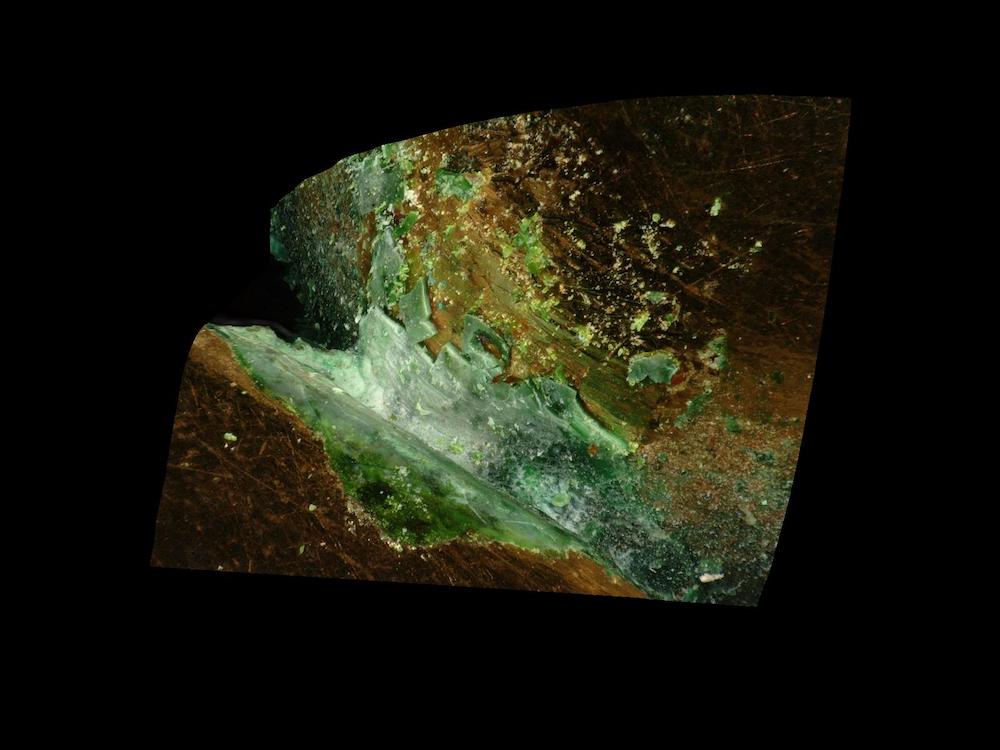Collections Management
The Collections Management (CM) department at HCC is responsible for the management of and facilitating access to the National Collection (NC). Management of the NC includes storage and documentation, such as accessioning and movement documentation. Collection stores are maintained to provide the best possible environment to store the artefacts e.g. at optimal temperature and humidity, good housekeeping and pest management.
Our Collections Managers and Officers also manage the movement of artefacts between the museums and HCC e.g. during installations and de-installations for exhibitions and storage, as well as movement of artefacts within HCC premises e.g. to conservation labs for treatment. One key activity of the CM department is the stocktake exercise, which is carried out together with our museum counterparts, to ensure that the NC is all accounted for.
In addition, the CM department includes the Knowledge and Information Management (KIM) section, which facilitates documentation and digital access for the NC.
Read more about the KIM section which is a part of the Collections Management department:
Storage Matters
by Ang Boon Kok, Jia Han & Tan Xue Miao
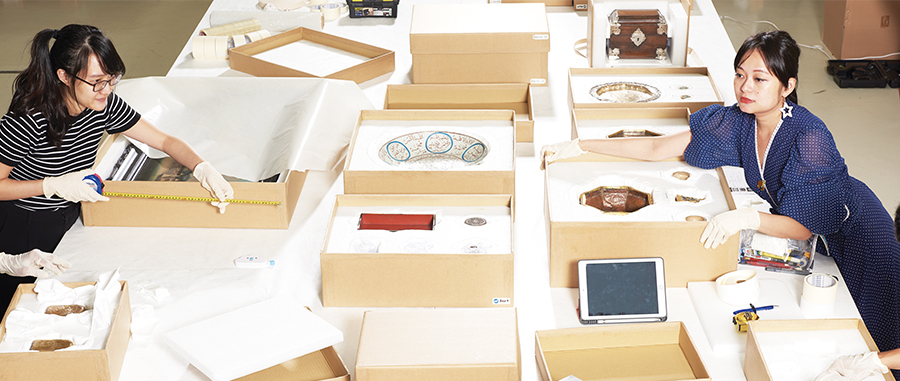
At any point in time, only less than 10% of the NC is on display at exhibitions, while the rest are in storage. With more than 250,000 NCs, collections management therefore plays a crucial role in managing and caring for artefacts.
Collections management refers to the provision of physical care and management of the collection. In HCC, a team of dedicated Collections Managers are responsible for overseeing collections functions, which include preventive maintenance, storage, and documentation.
Besides that, Collections Managers also manage work procedures such as new artefact/artwork receiving, accessioning, and facilitating access to the NC.
What Happens to a Newly Acquired Artefact at HCC?
Watch: What Happens to a Newly Acquired Artefact at HCC?
Types of Storage
As an institution managing collections of cultural heritage, space optimisation is an ongoing concern. Hence, we maximise storage space by designing storage to best suit each artefact type, and arranging the artefacts to best fit these storage spaces. The accessibility of artefacts is also taken into consideration, ensuring safe and efficient retrieval.
A Day in the Life of Collections Managers
Watch: Heritage Conservation Centre Behind The Scenes Episode 2
Knowledge & Information Management
The Knowledge and Information Management (KIM) is part of the CM department. KIM looks into documentation and facilitating digital access to our NC. This includes visual documentation of the NC, maintenance of collections management and movement systems, and heritage cataloguing. Singapore Collections Management System (SCMS) and Automated Collections Tagging System (ACTS) are both used to manage the NC. SCMS is a centralised database of our NC and is used by all parties working on the NC to update information of the artefacts. Images of artefacts by our Photographers and heritage cataloguing information by our Cataloguers are also stored in SCMS. Some of this information is made available to the public via Collections page on Roots.sg. ACTS is a RFID system which manages the location of artefacts and facilitates stocktake of our NC.
Learn more about some of the tasks carried out by our KIM Photographers and Cataloguers in the subsequent sections.
Visual Documentation (Photography)
by Dave Lee
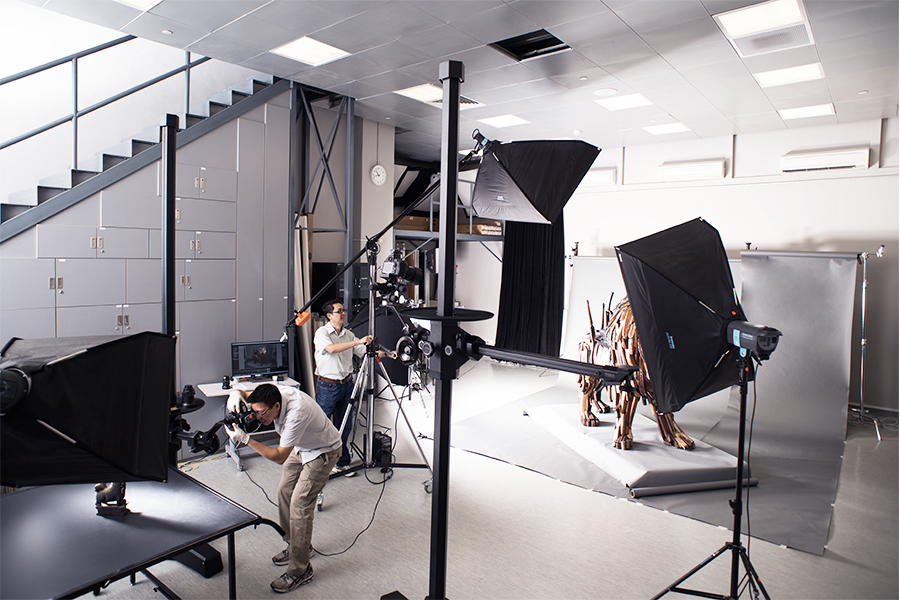
Visual documentation of the NC started in the 1970s using film and transparencies. In 2001, NHB made the transition to digital photography. Most of the visual documentation takes place in the photography studio at HCC. Visual documentation is part of the accessioning process. The images produced are used for multiple purposes, including in exhibition catalogues and online publishing.
Two types of cameras are used for visual documentation at HCC: A 36 megapixel DSLR is used for most of the artefacts, while an 80 megapixel Medium Format Camera (MFC) is used for artefacts which require high colour accuracy or have a lot of fine detail.
The Photographers’ monitors are set to auto calibrate every 200 hours to ensure accuracy in colour display. This helps to ensure that the colour of the image captured is as close to the colour of the artefact as possible. NCs are photographed in native camera RAW format and processed to TIFF and JPEG formats for archival and publication purposes respectively.
Our in-house Photographer, Dave, takes us through his task of photographing large textile pieces below.
Photoshoot Sets for Artefacts at HCC
Different object types need different photography set-ups due to different forms, sizes and the materials of the artefacts. 2D and 3D artefacts require different set-ups because of the height and depth of 3D objects.
Guidelines for NC Artefact Photoshoot
HCC sees the benefits in developing standardised photo-documentation guidelines to communicate to both our stakeholders and partners on the process of how we photograph our NC. Check out the guidelines HCC developed to photograph artefacts using the set-ups mentioned above.
Heritage Cataloguing
by Afiqah Zainal & Ho Swee Ann

In this digital age, there are new ways to facilitate access to the artefacts in the NC beyond the museums’ physical space. To tap on this potential, HCC started heritage cataloguing in 2014, which involves the attribution of metadata (terms/controlled vocabulary) to describe the artefacts in the collections digital database. The purpose of cataloguing is to organise and structure the digital artefact records to enhance search and retrieval of the artefacts on (1) the Collections page on Roots.sg (2) SCMS, our internal database, and (3) on other platforms such as digital interactives placed in the exhibition galleries at museums or heritage institutions.
Enhancing Digital Access
Tagging the artefacts with controlled vocabulary maintains a consistent use of metadata (terms) amongst the NC records which results in organised records for efficient search and retrieval. How is this done?
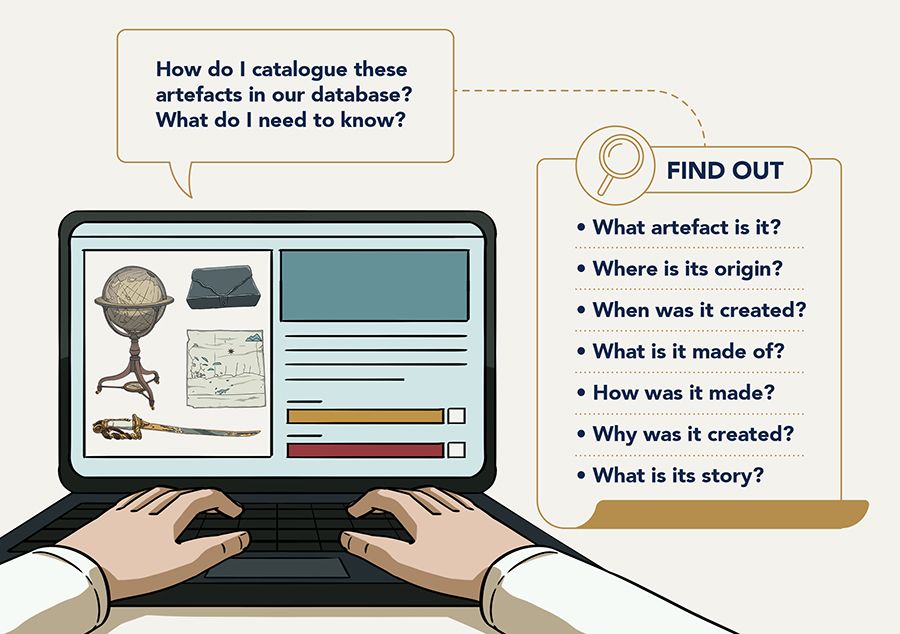
A Cataloguer reads and assesses the artefact’s information that has been provided by the Curators, Collection Managers and Conservators. Additional research is then conducted to ensure the accuracy of terms used to describe the artefact. These terms are attributed according to a set list of cataloguing fields, such as the ones you see below.
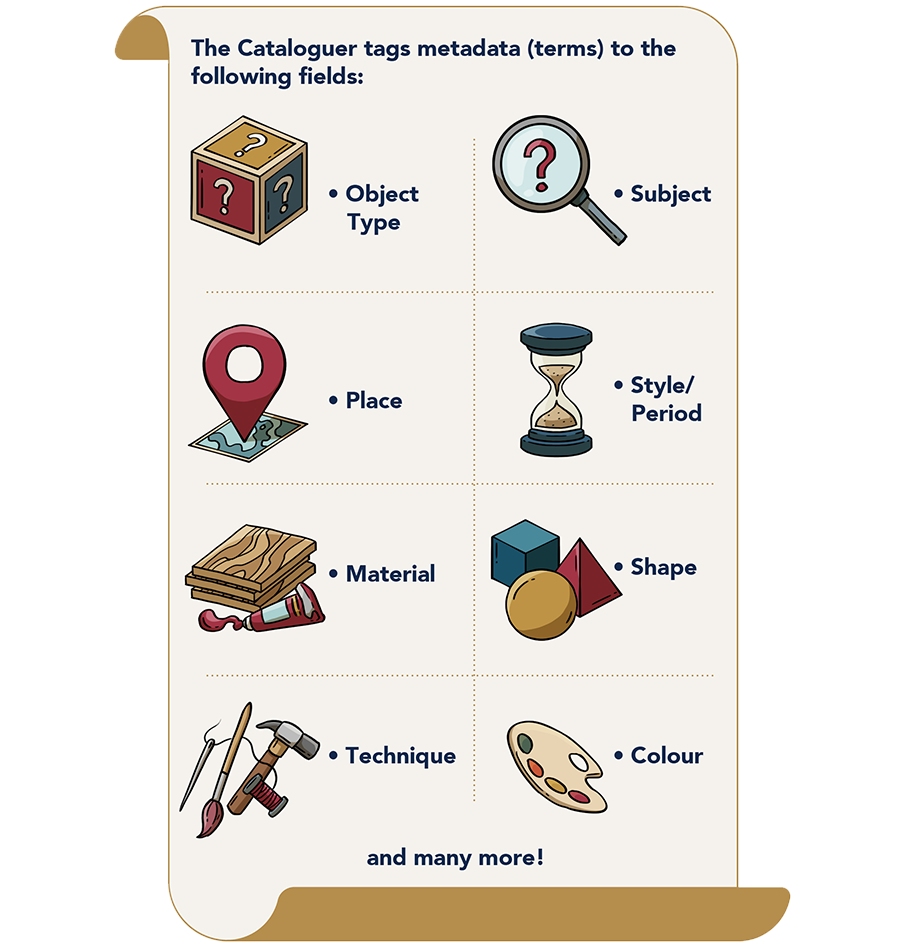
Cataloguers refer to local and international thesauri to choose the most suitable terms to complete the above fields. Cataloguers ensure that the term’s scope of use is applicable to describe the artefacts. [Examples of thesauri - Getty’s Art and Architecture Thesaurus (AAT), Library of Congress Authorities (LC), Getty’s Thesauri of Geographic Names (TGN), NLB’s Taxonomy and Thesaurus Editor (TTE)]
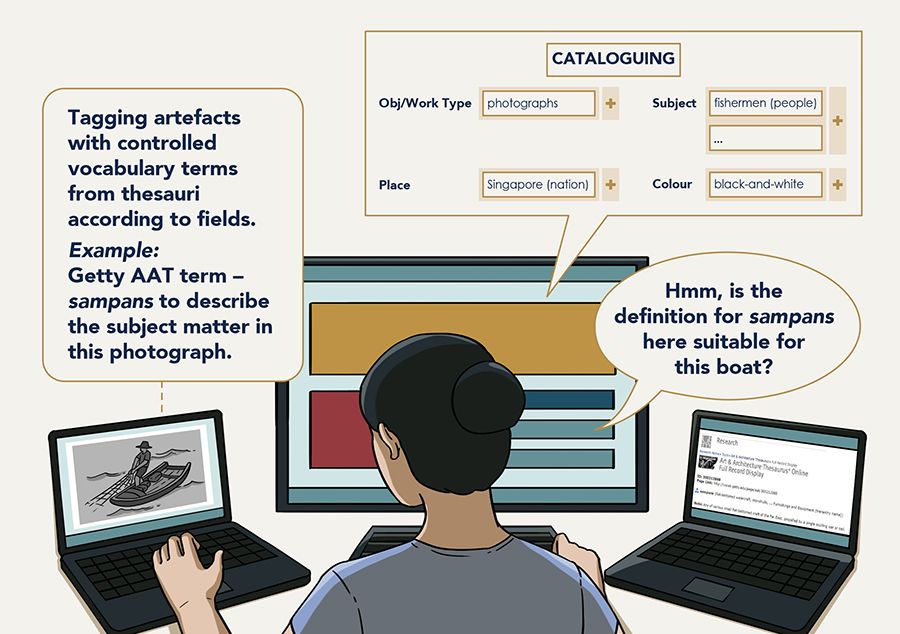
These terms are called controlled vocabularies – standardised and organised terms to ensure consistency in artefact description; which aid in content organisation and online retrievals.
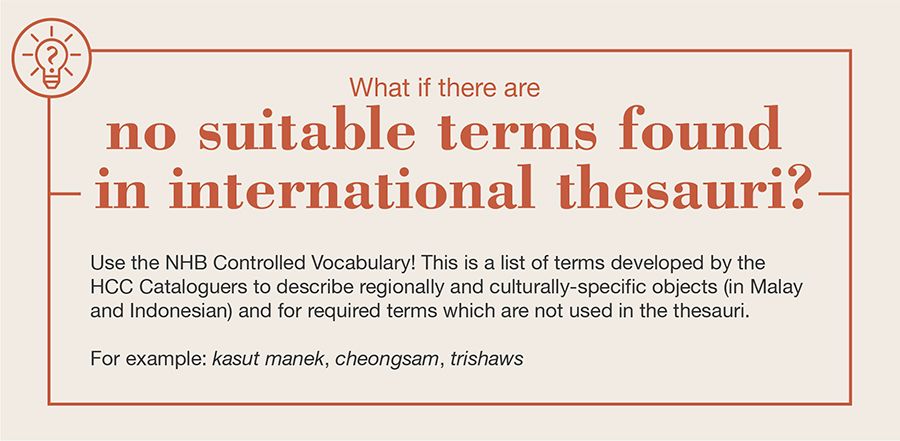
Check out how metadata created via heritage cataloguing can be used!
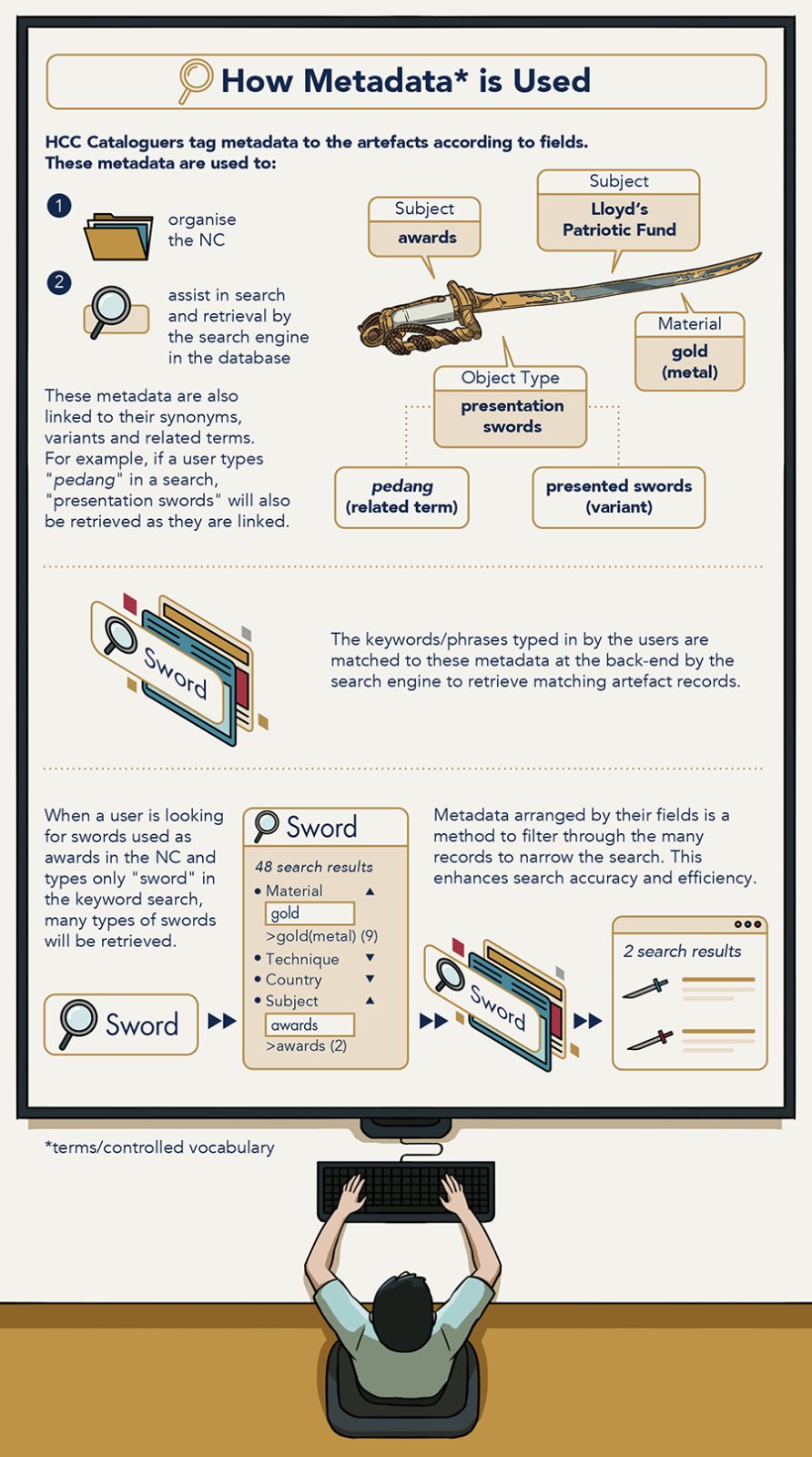
The artefact records are published on the Collections page on Roots.sg page on Roots.sg!
Digital Engagement Collaboration Project with NMS
The catalogued metadata and images taken by HCC Photographers may be used on digital platforms for various projects, such as the Interactive Discovery Map installed in An Old New World exhibition at the National Museum of Singapore from September 2019 – March 2020. Let us walk you through a few selected features of the interactive in these images, if you had missed it at the exhibition.
Classifying Artefacts in the NC
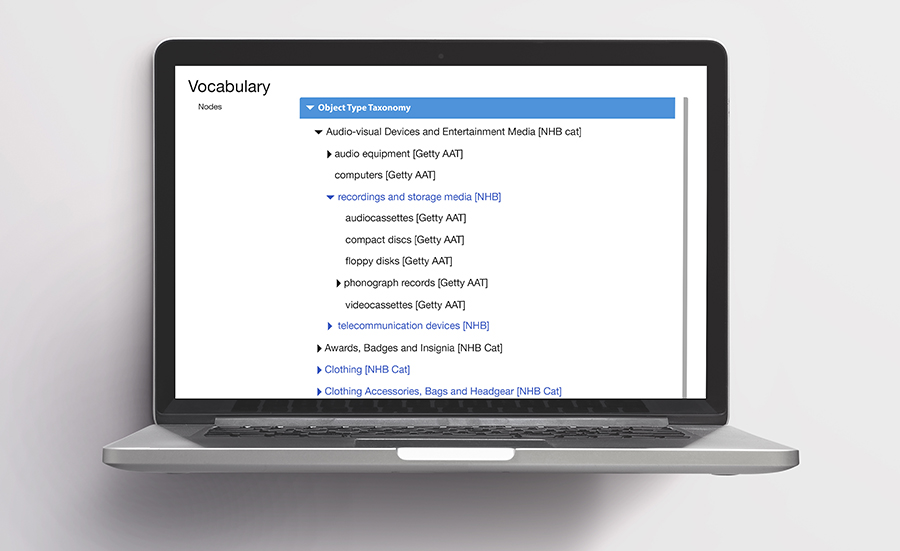
An example of NHB Object Type Taxonomy
Have you seen groups of objects arranged in a hierarchical manner? That’s a taxonomy!
Cataloguers are also developing the NHB Taxonomy, of which the first is the Object Type Taxonomy. A taxonomy organises terms or concepts to reflect the relationships between/amongst NC, providing them with a structure. The NHB Object Type Taxonomy aims to organise the NC artefacts according to their form and function. The object type categories and labels establish hierarchical and associative relationships amongst them.
- Hierarchical: Broader/Narrower Term relationships
- Associative: Related Term relationships
Click here (coming soon) to explore the NHB Object Type Taxonomy which aids browsing of the NC artefacts on the Collections Classification page on Roots.sg.
A Day in a Life of a Photographer and a Cataloguer
Watch: Heritage Conservation Centre Behind The Scenes Episode 3
Artefacts and Artworks Featured
Collection of Asian Civilisation Museum
2006-01264, Bowl, late 19th-early 20th centuries
2009-02004, Ceremonial hanging, 14th-15th century (Previously in the Roger Hollander Collection)
2009-02101, Ritual hanging, 14th-16th century (Previously in the Roger Hollander Collection)
2014-00443, Bowl, 15th century
2015-00491, Chinese couple made of painted pottery, late 18th century
2015-00642, Chess set, 18th or 19th century
2016-00366, Coffee pot, late 17th to early 18th century; Mount: 18th century
2017-00906, Covered bowl, late 18th or early 19th century (Gift of Jane Hardesty Poole, New York City)
Collection of National Gallery Singapore
P-0374, Bamboo and orchids, Fan Chang Tien, 1979 (Gift of the artist)
2017-00231, Unknown title, Rodolfo Paras-Perez, c. 1960s
Collection of National Museum of Singapore, National Heritage Board
2014-00216, Postcard ‘French Bund, Shanghai’, undated
2016-00049, A map of the East Indies, Herman Moll, early 18th century
2017-00048, A view of the East India docks, 1808
2017-00057, The homeward bound fleet of Indiamen from China, 1804
2017-00827, No. 8 Wooden sight box, 1941-1945
2017-00986, View of the West India docks on the Isle of Dogs, 1802
2017-01042, A Picturesque voyage to India: by the way of China, Thomas and William Daniell, 1810
2018-00081, Laurie & Whittle’s Oriental Pilot, 1799
2018-00683, Logbook for the East India Company’s Ship Charles Grant, 1834
2018-00686, East India Company flintlock musketoon, 1779
2019-00082, Lloyd’s Patriotic Fund £50 presentation sword,1804
2019-00083, East India Company Officer’s sabre and scabbard, 1800s
N-0001-E, Queen Victoria 1 Cent Coin, 1884
Collection of The Peranakan Museum
2011-01881, Cloud collar, early-mid 20th century
Strategic Communications & Digital Department, National Heritage Board
Video: A Day in the Life of Collections Managers
Video: A Day in the Life of a Photographer and a Cataloguer
Creative company
Oxygen Studio Designs Pte. Ltd.
CREDITS
Chong Yu Ting, Senior Assistant Director, Collections Management, HCC
Tan Pei Qi, Assistant Director, Knowledge & Information Management, HCC
Ho Swee Ann, Senior Manager (Cataloguing), Knowledge & Information Management, HCC
Ang Boon Kok, Manager, Collections Management, HCC
Jia Han, Manager, Collections Management, HCC
Dave Lee, Photographer, HCC
Alex Soo, Photographer, HCC
Afiqah Zainal, Asst Manager (Cataloguing), Knowledge & Information Management, HCC
Sheryl Lee, Asst Manager (Cataloguing), Knowledge & Information Management, HCC
Tan Xue Miao, Asst Manager, Collections Management, HCC
To know more about how we care for the artefacts in the Singapore National Collection:




